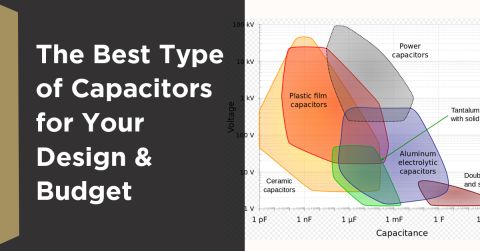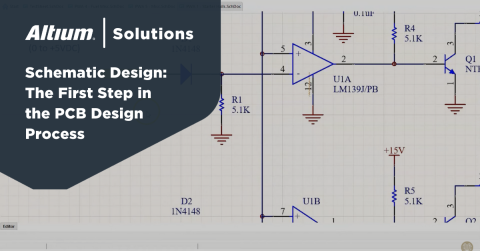A Learning Exercise - Voltage Regulator Testing Fixture

Introduction
The Internet is full of articles documenting successful electronic development projects showcasing the developer's skills and knowledge. However, this casts a somewhat unbalanced view of the reality of the development process, where not all projects run smoothly or succeed. However, the projects that don't go to plan often have the most valuable lessons to teach. So, to adjust the balance, here's a story about a prototype that didn't quite meet expectations but provided a helpful learning exercise along the way. We'll also look at how to pull the imperfect prototype back on track with some ideas for future improvements.
Project Overview
This project started when I needed a method of measuring the performance of off-the-shelf power modules, analyzing noise, efficiency, output voltage, startup time, and load transient response. The problem was that the data sheets that come with voltage regulators could be somewhat lacking when it comes to detailed information for these critical parameters. The problem is that an overly optimistic datasheet that deviates from real-world performance can significantly impact circuit performance when you plug the voltage regulator into your carefully designed circuit.

Finding out a voltage regulator doesn't work as expected after you have soldered into a prototype circuit board can be an expensive and time-consuming mistake, especially if you discover that the replacement component requires the board design to be changed. Of course, there's also the risk that the replacement component may not entirely work as predicted from the datasheet information.
The best method to solve this problem is the development of a test fixture that you can drop any voltage regulator into to test the real-world performance before using the component in your circuit design, especially before allowing it anywhere near a circuit board.

The approach adopted for developing the test fixture was to employ a PCIe 1x slot with a corresponding host board to streamline the regulator testing. A standard Peripheral Component Interconnect Express (PCIe) x1 slot provides a compact solution to connecting the test fixture to the control board in an application with low bandwidth requirements.

Using a control board simplifies the task of setting up multiple regulators for testing, allows for tailoring the input and output capacitance to align with manufacturer guidelines, and caters to any pinout.

The test environment includes a Rigol DL3021 Programmable DC Electronic Load, but the current slew rate available for load transient testing was insufficient for the planned testing. An array of resistors were mounted on a board to resolve this, with MOSFET switches employed to switch between these static loads at sufficient speed to provide the required fast load transient. This switchable static load board and then connected to a second card slot on the control board.
The test environment also includes an oscilloscope for signal and response measurements, so integrating oscilloscope probes into the test fixture would offer significant benefits when conducting testing.

With the requirements for the test fixture established, the development phase began, as did the learning experience, as issues quickly appeared, as we shall now see.
Integrated OscillOscope Probes
The first challenge and opportunity to learn from mistakes came from the need for integrated oscilloscope probes. The development approach was dismantling and reverse engineering a Rigol probe used by the Rohde and Schwarz LCR meters. Analysis of each component supports the creation of a standard probe schematic from the observed values. The issue was that the originally intended use for this probe was with a high-impedance input oscilloscope which uses ultra-thin lossy conductors with a resistance of 400 ohms/meter to help dampen any reflections. The probe conductor to shield resistance is one to two orders of magnitude lower than standard coaxial cable.
The problem for hobbyists and small businesses is that sourcing this ultra-low resistance coaxial cable is only available in giant and expensive reels, which is impractical for short-length, low-volume requirements. The only realistic option was to use a standard 50 ohms/meter coaxial cable and adjust the probe component values to compensate for the difference. I used Altium's simulation tools to balance the high capacitance of the coaxial cable and apply the correct compensation in the integrated probe circuit design.
Unfortunately, despite all the meticulous analysis and design effort, the integrated probes would never deliver the required performance. Even after carefully tuning the circuit design, they only offer about 80MHz real-world bandwidth. While these would be more than adequate for regulator testing, the effort needed to implement and adjust the integrated probes outweighed the benefits. Ultimately, hooking standard probes to the board for testing offered a better solution.
Design Review Limitations
Often circuit board designs fail due to a lack of rigorous design review to spot the problems that may appear obvious but which elude the designer because they're too invested in the proposed design. One of the greatest risks to project success is rushing plans through with insufficient design review input. However, even design reviews appropriately done are not infallible. This project is an excellent example of the latter.

The development of the voltage regulator test fixture began with a proof of concept design implemented as a well-functioning, albeit somewhat rough, experimental board. This initial prototype demonstrated the feasibility of the design and offered a starting point for the refinement into a final prototype board. The design was reviewed by two seasoned engineers, with the project green-lit with only minor tweaks necessary. However, these thorough reviews could not identify the ground issues plaguing the development process.
Grounding Issues
The design of the prototype board had multiple ground domains rather than separate analog and digital grounds. You don't need hindsight to realize that this approach is typically a terrible idea.
One of the grounding issues arose as the power to the regulator and the static resistive load needed switching using MOSFETs to measure transient response. However, the test environment employed a Rigol DP832 Bench Linear DC Power Supply, a relatively soft starting device. This feature is typical of all lab power supplies, so the test fixture had to accommodate this test equipment behavior. The chosen solution was to configure the control board to allow the power supply channel to be enabled and settled before controlling a MOSFET switch to apply power to the regulator under test.

The problem is that the control board connects with five power supply channels, three oscilloscope channels, the DC load board, and a sense connection for the DC load. This complexity resulted in the entanglement of the ground domains in the implemented circuit.
The design schematic looked flawless, which meant the issue wasn't apparent to the designer and eluded the design reviews. However, once implemented, it provided an inferior ground reference to the voltage regulator under test, which meant the component was always active, even when supposedly disabled, when waiting for the power supply voltage to stabilize.
The grounding issue was identified and resolved by thoroughly measuring resistances and voltages at critical points of the circuit in all the various operational states to correlate actual performance against the design predictions and resolve the disparities. This process allowed identifying the ground issues as the cause and enabled prototype modification to improve the circuit design and prove that the changes would work.
You can change a prototype board effectively by cutting tracks and rerouting conductivity paths with wire links. We call these links' bodge wires, but the reality is this is an effective way to verify proposed design changes and validate the circuit performance systematically. In this example, resolving the ground issues needed an optoisolator and the rewiring of some ground paths.
MOSFET Issues
Issues around the MOSFET drivers not working as expected also hampered the prototype design verification. Through investigation, I identified the switch performance was incompatible with the topology of the assembled design. A thorough investigation could not find any design issues that could cause the observed problematic behavior, so I tested the MOSFETs off-board to try and identify the cause. At this point in the investigation, it quickly became apparent that the MOSFETs didn't function as per the datasheets, which effectively undermined the whole design process, which relies on the datasheets being correct.
Another MOSFET issue was that the components were regularly blowing despite sufficient safety margins built into the circuit design using a parallel MOSFET pair connected to manage the maximum loading. Diagnosing design issues is a challenging stage of the development process for an electronics designer. However, multiple independent factors affecting performance exacerbate the problem, including components that do not behave as expected and non-obvious ground issues, which can tax the most experienced developers.
The challenge in resolving the issue with the blowing MOSFET components was that there was no apparent cause. If all the circuit components worked as expected, the problem should not occur. In an attempt to isolate the cause to a particular part of the circuit design, I replaced the gate drivers using the components successfully used on the initial experimental board. The challenge was that these experimental components were housed in a DIP package while the drivers on the prototype board had a SOT-23-5 footprint. However, the results of this exercise proved that the issue of blowing MOSFETs was due to the drivers used on the prototype board. A thorough investigation of the driver datasheets failed to identify why these components were unsuitable for use in the circuit.
After resolving the MOSFET driver issue, switching issues still plagued the board. In the end, the only way to get reliable performance was to replace the MOSFET components on the prototype board with the equivalent TO-251 through-hole mounted MOSFET components that I had successfully used on the experimental board. This change finally provided the reliability needed for regular testing, even though, on paper, there should have been no performance difference.
This is probably the most important lesson; just because the datasheet for a component tells you that your design is perfect, performance issues can still be due to component problems rather than an error in the circuit design.

There was one last MOSFET issue to report from which we can learn, which stemmed from the need to physically move the prototype board out of the development area during lab refurbishment. After moving the board back into the lab area to recommence testing, the load-switching function failed to operate as expected. It turns out that one of the MOSFETs had been exposed to an accidental electrostatic discharge (ESD) and failed. Replacement of the damaged component restores functionality, and testing could resume.
Current Circuit Status
With the grounding and switching issues resolved and the idea of using integrated probes discarded, the prototype test fixture was good enough to use in anger. I have tested nearly 100 voltage regulators; many more are in the pipeline. The results have proven invaluable for selecting regulators for projects using real-world performance rather than theoretical, sometimes mythical, datasheet information. This approach eliminated all the pain points of plugging in a regulator and then spending hours investigating why a circuit is not behaving as expected, only to find it's because the regulator is not performing as expected.
Planned Improvements
An added benefit of the extensive regulator testing program is it has uncovered more information on the performance of the test fixture and identified areas for future improvement.
Power Supply and Switch Control
One key change identified for the next improved version of the test fixture includes eliminating the need to use precious power supply channels for switching MOSFETs. A solution is needed where these power supply channels remain available for more valuable purposes.
The Keysight DAQ970A Data Acquisition System with a built-in digital multimeter has a digital IO board with USB and LAN connectivity that could take over the switch control function, freeing up the power supply. Alternatively, there's always the option to add a microcontroller to the test fixture and make test functions entirely self-sufficient with an internal control capability.
Another planned power supply improvement is replacing the Rigol DP832 series power supply with its maximum of 220W output with a new Kikusui PWX1500 power supply rated at 1.5 kW that has much greater output supply options, eliminating the need to chain power outputs in series or parallel to meet the required voltage or current needs of the higher performance voltage regulators under test.
Load Cards
The second key change is to eliminate the need to manually swap out load cards, with a plan to replace the card with a controllable DC load with a sufficiently fast slew rate for regulator transient testing.
Component Under Test Connection
A third key change is eliminating the need for the voltage regulators under test to be soldered onto the adapter card, instead replacing this with a reliable method of plugging the regulator that can handle the multitude of different connection configurations. I plan to reveal the solution in due course.
Integrated Probes
Finally, there's the issue of the integrated probes. A practical solution that delivers the right results would improve the test fixture's useability. The answer is to replace the high-impedance input oscilloscope with a model with a standard 50-ohm input that would allow a simple voltage divider to support the connection of a common 50 ohms/meter coaxial cable for a near-flawless signal.
Conclusion
The article shows how the best-designed circuit can present unexpected problems. Even the most straightforward circuit designs that have been through independent peer reviews can refuse to work as expected when the theoretical design becomes a real-world device. Critically, datasheets can be misleading or even incorrect. Ironically, a test fixture designed to validate voltage regulators against their specifications to resolve performance disparities was nearly derailed by datasheet problems.
In this real-world example, additional experienced engineers pulled in to provide a second opinion did not help identify the ground issues, and the switching issues should never have occurred based on the available driver and component datasheets.
However, on a positive note, once the test fixture was operational, it quickly showed its value with the wealth of data gathered from the testing, dramatically simplifying voltage regulator selection for new projects.
If you have similar stories offering valuable learning opportunities or insights for circuit design, drop a comment and share your experiences. Also, let us know if you have any suggestions for improvements to the voltage regulator test fixture or ideas for new features.












